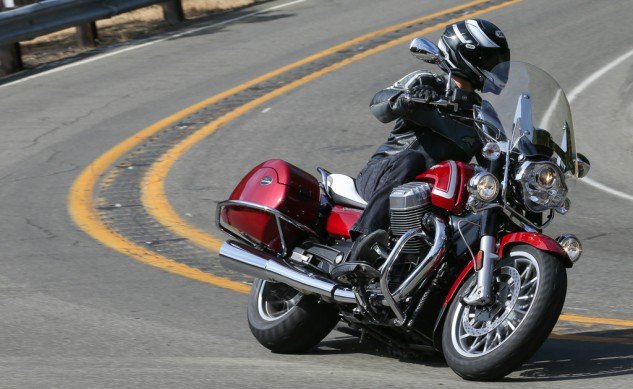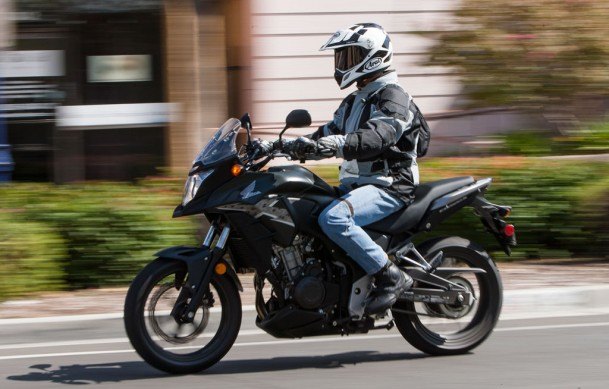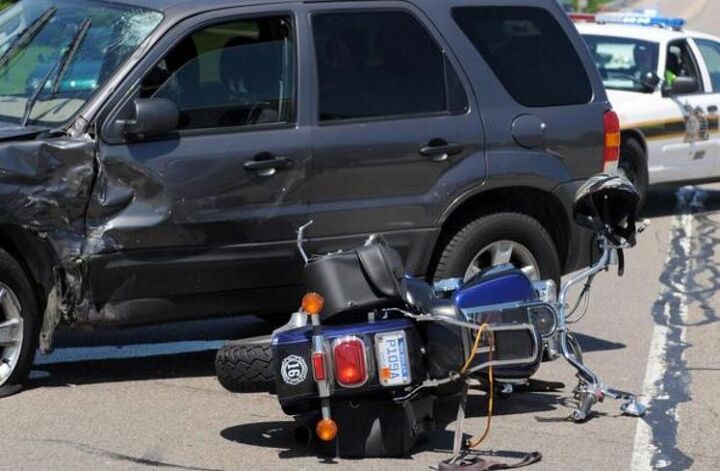
 |
|
|
#1 |
|
All the news that's fit to excerpt
Name: newsie
Location: who knows?
Join Date: Jun 2008 Motorcycle(s): only digital replicas Posts: Too much.
|
[motorcycle.com] - Insurance Buyer’s Guide – Insurance Primer
 By the time a rider is old enough to consider licensing a motorcycle for street use, she should be mature enough to realize that humans make mistakes, and motorcyclists count themselves among the ranks of humans. Consequently, the need for motorcyclists to make sure they can pay for any damage they may cause to other vehicles should be fairly obvious. Even though bikes are smaller than cars or trucks, they can still put some pretty big hurt on the other vehicles in the right (or is that the wrong?) circumstances. With that in mind, almost all states require that the registered owner of a motorcycle carry some form of proof of financial responsibility.*In most states – even those that don’t require proof of financial responsibility to register a motorcycle – the primary means of protecting oneself is liability insurance. While many states do offer alternate means of covering your financial responsibility for use of your motorcycle on public highways, the easiest (and most likely cheapest) is through an insurance policy from a company registered to do business in your state. Some states do offer pools which allow people who insurance companies won’t cover, usually because of excessive tickets, accidents, or DUIs. Other states allow for riders to leave a deposit in the form of cash or securities in a state office as collateral. We all hate paying insurance companies for a service we hope we never have to use, but how many of us have a spare $50,0000-$60,000 lying around to have the state hold for us so that we can go ride?  No matter what you ride, from the most expensive bike to the least, you need proof of financial responsibility. No matter what you ride, from the most expensive bike to the least, you need proof of financial responsibility.More than the Minimum We need to note, however, that the amount of insurance coverage states require is the minimum level of coverage and will not cover all possible scenarios. Hospital bills are expensive, and for example, the $15,000 of injury coverage required for a single person won’t last long if they end up in the hospital for even a night. Additionally, with the price of the average car well above the $10,000 minimum property damage required by many states, one human error could have huge financial consequences for you if you’re not covered sufficiently. So, if you’ve got assets to protect, like a house or a storage unit full of gold bullion, you’d be smart to buy coverage for more than the minimum amount required by your state. Some states also require Uninsured Motorist coverage to cover you should you be involved in an accident with a driver who has no insurance or not enough to cover your medical expenses. Since motorcyclists are more vulnerable in the case of physical conflict between motor vehicles, UM might be a good thing to carry, particularly if your medical insurance isn’t terribly comprehensive. Full Throttle Coverage Up until now, we’ve only been considering insurance for when you’re at fault (Well, except for the UM coverage.). What about for those of us who owe money on our motorcycles, or to put it another way, what about those of us who ride a motorcycle that the bank co-owns? Insurance is there to protect us from ourselves and others in this case. Naturally, the banks want us to carry Comprehensive and Collision insurance when we ride their motorcycle. These two policies cover your bike in two similar yet different ways. Comprehensive handles a stolen bike or one that is damaged or lost in other non-riding situations. Collision pays to fix your bike in an accident, regardless of the fallible human who caused the mishap. Your lien-holder will determine the value of the insurance you’re required to carry. However, there are many instances of when you’d want to carry Comprehensive and Collision on your motorcycle – even if it’s paid for. First, a rare or valuable motorcycle would be a good example, or a heavily customized motorcycle would be another, unless you want to get reimbursed for just the cost of the stock bike – and none of the blood and treasure required to make it the one-of-a-kind motorcycle you wanted. Just make sure the stated value in the policy is enough to cover your bike.  Insurance can cover you from the unexpected to the absurd. Insurance can cover you from the unexpected to the absurd.Then there are the convenience insurance policies that you may want to add. Embarking on a yearlong, continent-encompassing tour? You might want to pop for a roadside assistance package, so a locksmith can come retrieve the bike keys from your locked saddlebag 1,200 miles from the spare key you have at home. Every year, as your policy renews, take the time to talk to your insurance agent to see if there have been any relevant changes in the state requirements for your insurance – or in your needs. You could end up saving on your monthly payments or getting coverage you didn’t realize you needed. You might also consider getting a quote from a different company to see if it offers a lower price for identical coverage or improved coverage at a similar price.  After this happens, insurance can help you get you and your bike street worthy again. After this happens, insurance can help you get you and your bike street worthy again.Paying the bill will still be an unpleasant experience, but should things go pear-shaped, you’ll be glad you’ve got insurance to get you back on two wheels as soon as possible. Motorcycle Insurance Requirements by State*StateRequirementMinimum Requirements (single injury, all injuries, property damage)SpecificsAlabamaProof of Financial Responsibility$25,000, $50,000, $25,000Liability insurance or Motor Vehicle Cash Bond/Certificate of Cash BondAlaskaLiability Insurance$50,000, $100,000, $25,000ArizonaProof of Financial Responsibility$15,000 $30,000, $10,000Liability insurance or self-insurance for owners of 10 vehicles or moreArkansasLiability Insurance$25,000, $50,000, $25,000CaliforniaLiability Insurance$15,000, $30,000, $5,000ColoradoProof of Financial Responsibility$25,000, $50,000, $15,000Liability insurance or self-insurance for owners of multiple vehiclesConnecticutLiability Insurance$20,000, $40,000, $10,000DelawareLiability Insurance$15,000 $30,000, $10,000FloridaProof of Financial Responsibility$10,000 $20,000, $10,000Proof of liability insurance or post surety bond with state-licensed company/deposit cash or securities with Department of Highway Safety and Motor Vehicles, Self-insurance certificate from Bureau of Financial ResponsibilityGeorgiaProof of Financial Responsibility$25,000, $50,000, $15,000Licensed liability insurance vendor or self-insure through Office of Insurance and Safety Fire CommissionerHawaiiLiability Insurance$20,000, $40,000, $10,000IdahoProof of Financial Responsibility$25,000, $50,000, $15,000Liability insurance, surety bond from authorized broker, cash deposit with State Treasurer, self-insurance (25 vehicles or more)IllinoisLiability Insurance$25,000, $50,000, $20,000IndianaProof of Financial Responsibility$25,000, $50,000, $10,000Liability insurance, deposit with State Treasurer, trust fund, bond with surety companyIowaProof of Financial Responsibility$20,000, $40,000, $15,000Liability insurance or must be able to “acceptable forms of financial responsibility following an accident.”KansasLiability Insurance/Self-Insurance$25,000, $50,000, $10,000Insurance identification card or state certificate of self-insuranceKentuckyLiability Insurance$25,000, $50,000, $10,000LouisianaLiability Insurance$15,000, $30,000, $25,000MaineLiability Insurance$50,000, $100,000, $25,000Liability with unisured motorists and medical insurance requred Riders unable to get insurance can take part in Maine Automobile Insurance PlanMarylandLiability Insurance$30,000, $60,000, $15,000MassachusettsLiability Insurance$20,000, $40,000, $5,000MichiganLiability Insurance$20,000, $40,000, $10,000Bodily injury and property damage requiredMinnesotaLiability Insurance$30,000, $60,000, $10,000MississippiLiability Insurance$25,000, $50,000, $25,000MissouriProof of Financial Responsibility$25,000, $50,000, $10,000Liability insurance, $60,000 bond or real estate bond with Department of Revenue, cash/securities deposit, self-insure (companies/religious organizations)MontanaProof of Financial Responsibility$25,000, $50,000, $10,000Liability insurance, surety bond with state licensed broker, real estate bond with at least two licensed sureties, $75,000 cash deposit deposit with State Tresurer, self-insure (26+ vehicles registered in owner’s name)NevadaProof of Financial Responsibility$15,000, $30,000, $10,000Liability insruance or $30,000 bond from registered surety company, state Certificate of proof of financial responsibility (for $30,000 cash or government bonds held by State Treasurer, state issued $60,000 real estate bond, state approved self-insufance 26+ vehicles registered in person’s name)OklahomaProof of Financial Responsibility$25,000, $50,000, $25,000Liability insurance, Oklahoma Assigned Risk Auto Plan, $75,000 cash tendered to Department of Public Safety, bond from licensed surety companyOregonLiability Insurance$25,000, $50,000, $20,000Liability insurance must also include Uninsured Motorist Coverage of $25,000 per person and $50,000 per accidentPennsylvaniaProof of Financial Responsibility$15,000, $30,000, $5,000Liability insurance or self-insurance through $50,000 security collateral registered with the stateRhode IslandLiability Insurance$25,000, $50,000, $25,000South CarolinaLiability Insurance$25,000, $50,000, $25,000Uninsured Motorist Coverage also required to same minimal levelsSouth DakotaLiability Insurance$25,000, $50,000, $25,000TennesseeProof of Financial Responsibility$25,000, $50,000, $15,000Liability insurance or cash/bond deposit with Department of SaferyTexasProof of Financial Responsibility$30,000, $60,000, $ 25,000
__________________________________________________
I'm a bot. I don't need no stinkin' signature... |
|
|

|
 |
 Similar Threads
Similar Threads
|
||||
| Thread | Thread Starter | Forum | Replies | Last Post |
| [motorcycle.com] - Fork Buyer’s Guide | Ninjette Newsbot | Motorcycling News | 0 | February 17th, 2015 03:30 PM |
| [motorcycle.com] - Suspension Buyer’s Guide | Ninjette Newsbot | Motorcycling News | 0 | February 3rd, 2015 10:10 PM |
| The Motorcyclist’s Guide To Health Insurance | Motofool | General Motorcycling Discussion | 11 | February 25th, 2014 09:14 AM |
| [motorcycle.com] - Does usage-based insurance (or pay as you drive insurance) work fo | Ninjette Newsbot | Motorcycling News | 0 | October 9th, 2013 02:50 PM |
| 1993 Motorcycle Buyer's Guide. | wild-bill | General Motorcycling Discussion | 3 | January 1st, 2011 08:44 PM |
| Thread Tools | |
|
|